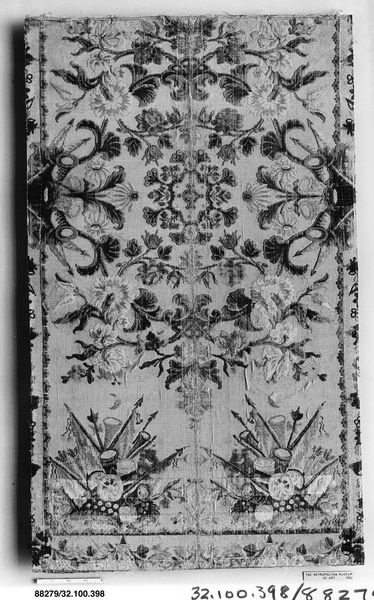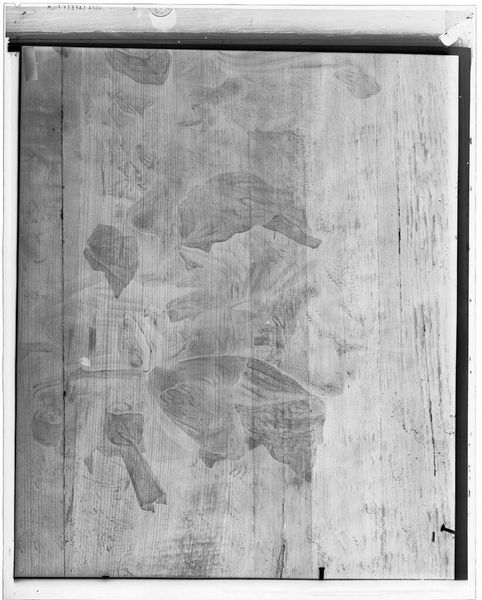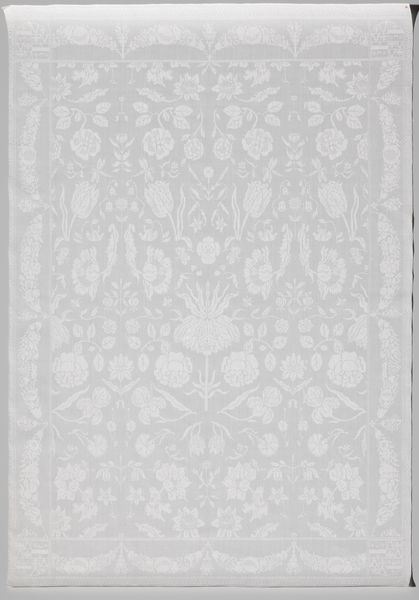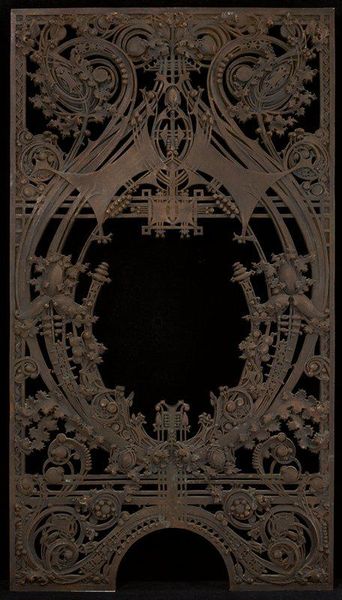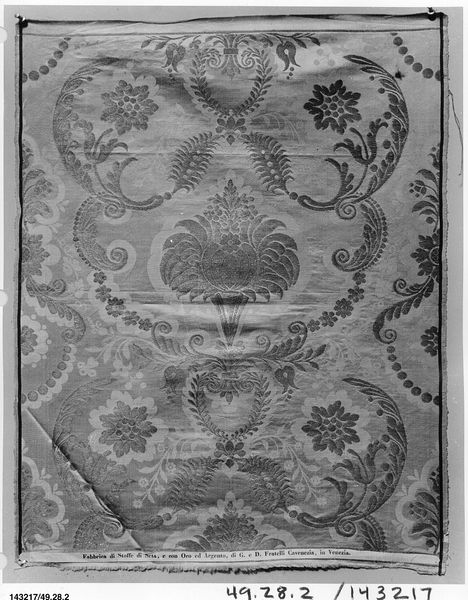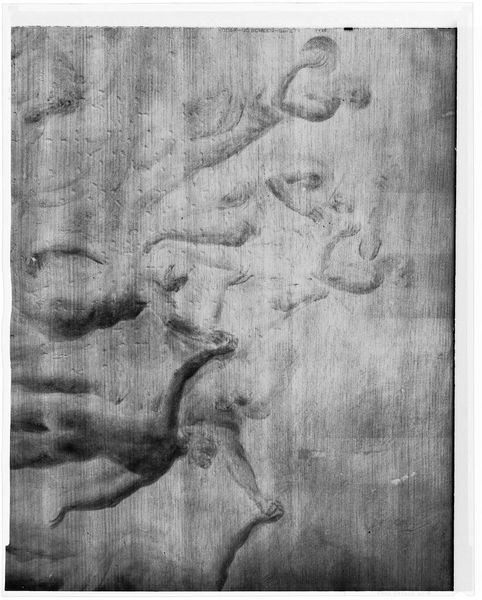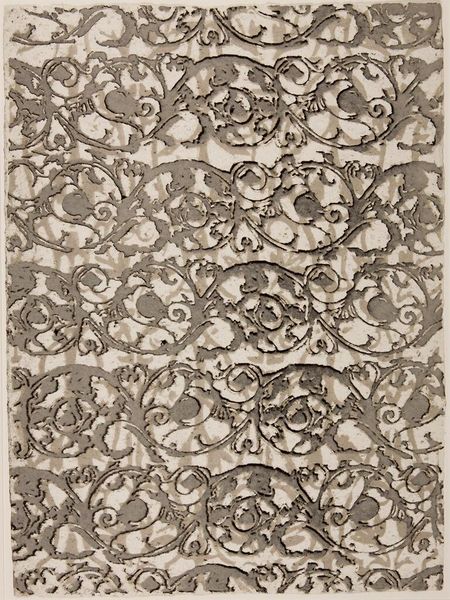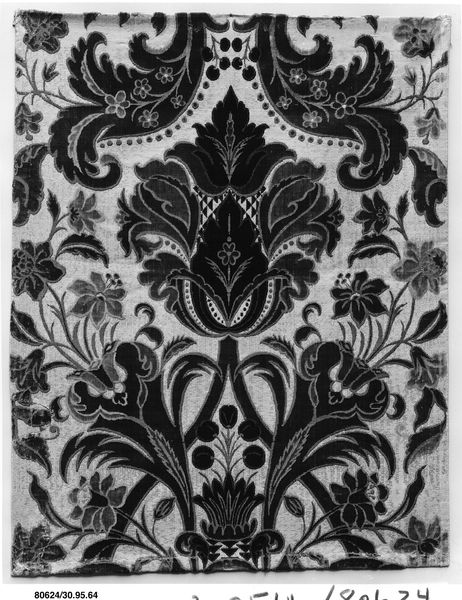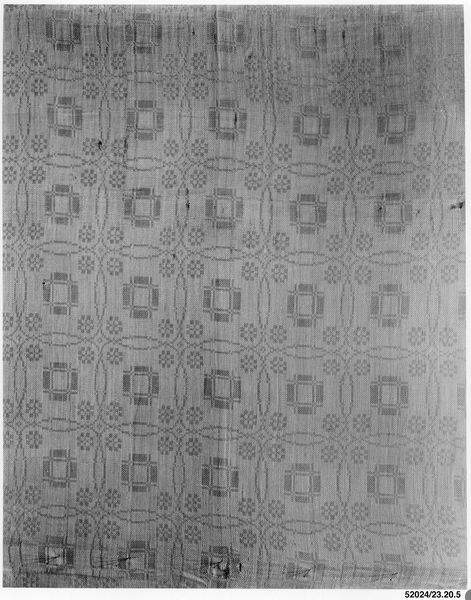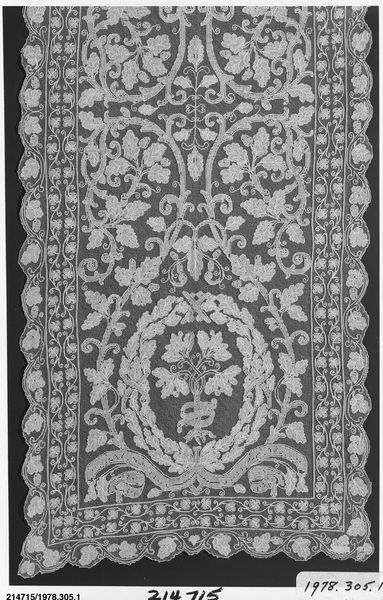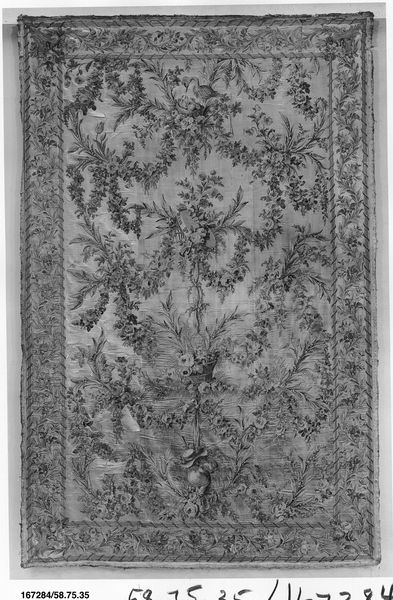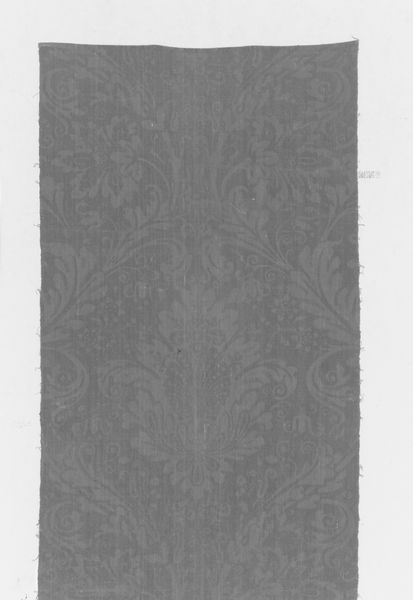
Dimensions: Overall: 55 × 20 in. (139.7 × 50.8 cm)
Copyright: Public Domain
Editor: This painted door panel by Jean-Baptiste Huet, dating from between 1770 and 1790, feels like a delicate whisper from the Rococo era. I am struck by its ethereal quality and how it blends sculpture and painting. How do you read this piece, particularly in terms of symbolism? Curator: I see echoes of classical mythology and a desire for harmony and beauty. The female figure, perhaps a nymph or goddess, embodies grace, her form echoing the swirling floral motifs above. Consider how the artist uses flowing lines and organic shapes, reflecting a longing for a return to an idealized, pastoral past and, culturally, a feminine principle. Editor: I hadn’t considered the pastoral aspect, but it’s very clear in the floral designs. Are those standard decorative choices or could there be meaning in specific flowers? Curator: Likely, there is meaning embedded. In this era, floral arrangements and depictions weren't simply decorative; they conveyed sentiments and alluded to shared cultural knowledge. What feelings are evoked by the way she holds that…scroll? Editor: I suppose it suggests a figure that is both learned and sensual. How the overall design is integrated… she isn't simply "placed" in a setting, she *emerges* from the decoration itself. It all coalesces into this flowing piece. Curator: Precisely! This embodies Rococo's playful dance between nature and artifice. Did you observe any shapes repeating? Editor: The ovals along the border mirror her own curves...a continuous serpentine rhythm connects every single detail together, right? I feel I can now unlock some Rococo painting. Curator: Wonderful. By observing, we can discover the deep symbolic layers informing even seemingly light-hearted decoration. It reminds us that every era uses its symbols to perpetuate values and shape how people perceive themselves and the world around them.
Comments
No comments
Be the first to comment and join the conversation on the ultimate creative platform.

